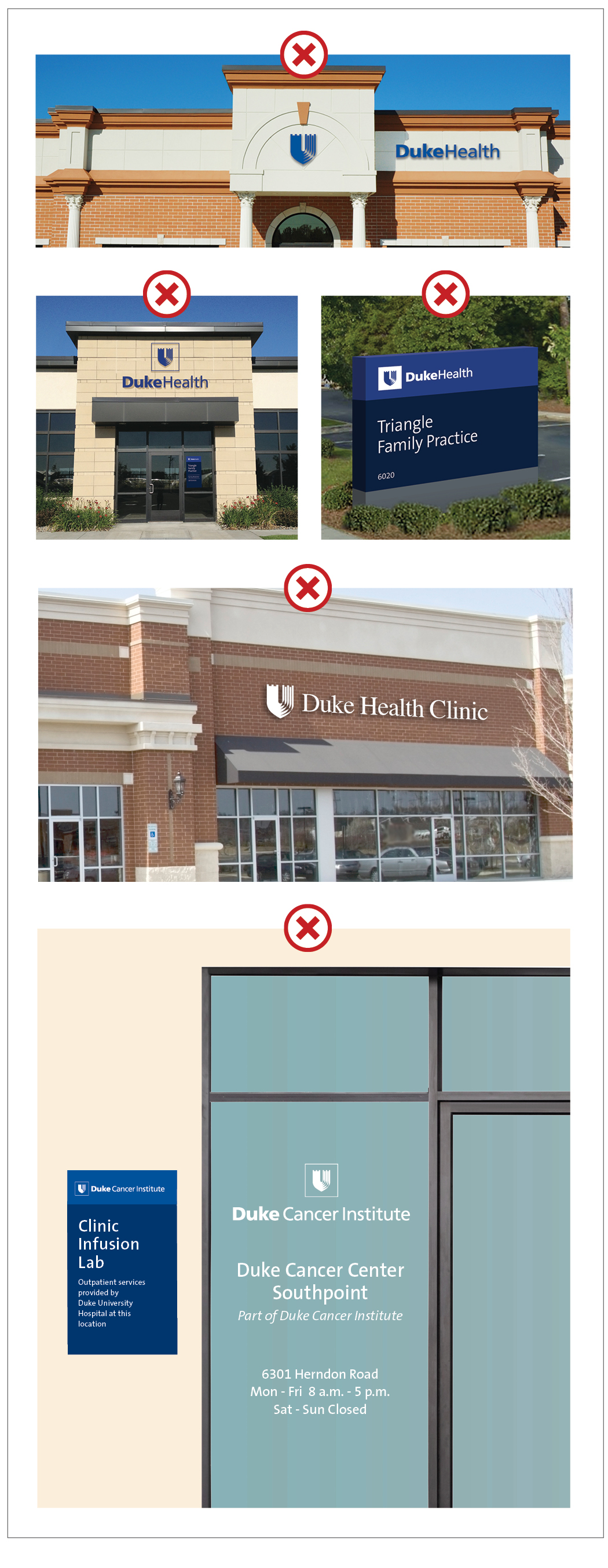All signage designs and applications must be vetted through both Duke Health Marketing & Communications as well as approved vendors before any signage or wayfinding materials can be installed.
Materials specifics like panel gauge, extrusion materials, fasteners, finishes, mounting methods, and accessories are all predefined by Duke Health’s signage and architectural vendor.

Types of Signs
- Building, Site, and Directional Identification
- Entry identification
- Exterior wayfinding
- Interior wayfinding
- Site branding
- Miscellaneous informational signs

APPROVED Examples
- Always use approved logos
- The Duke Health logo is the preferred site identification logo
- When possible, use the main Duke Health logo and identify clinic or center in type
- Always make sure there is enough contrast between the logo and the background materials
- Use The Sans font for the location/site and clinic names
- Location monument signs can include more specific location information and the address

NOT APPROVED Examples
- Do not use unapproved logos
- Do not use the reversed logo on a light background
- The shield should always be white when reversed
- Do not create Duke Health logos for clinic names or locations
- Do not use service line logos to designate locations
- Do not use multiple logos
- Use The Sans for additional locations or information
- Do not make Duke Health logo too small on signage
- Do not separate shield from the rest of the logo
- Do not use a different font or create your own logo
- Do not use other colors other than Duke Royal Blue, white, or gray


